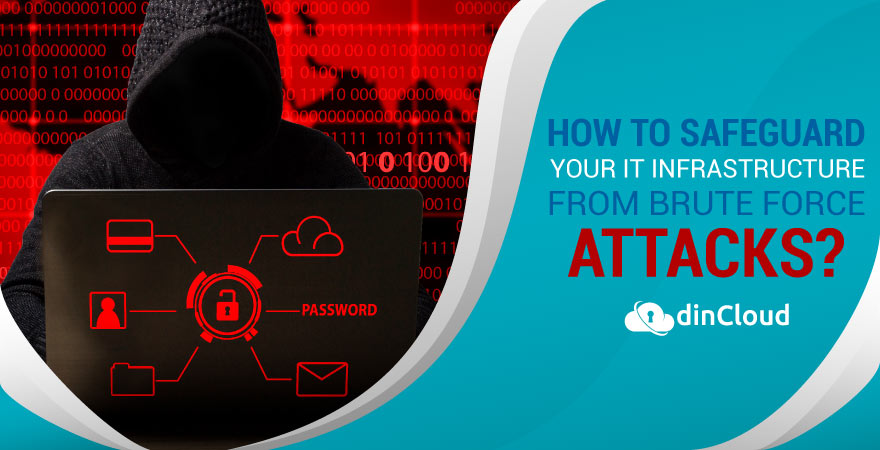The ongoing pandemic has literally transformed the way millions of people work across the globe. Remote Work or Work from Home (WFH) is rapidly becoming the new norm and organizations are hastily implementing some sort of remote productivity apparatus.

In an attempt to accomplish this rather complicated and risky task, most IT departments tend to rush up the security aspect. This leaves the entire organizational network highly vulnerable to a wide range of extremely devastating cyber attacks.
Also Read: 4 Security Risks of Windows and How to Prevent Them
What is a Brute Force Attack?
This is one of the cyber attack vectors used quite commonly by cyber criminals. In this attack methodology, a hacker will bombard the user account of a company employee with elevated access rights with a vast number of possible passwords.
While this may seem trivial to most readers, this is proving to be a highly successful attack platform. Perhaps this “success” is largely attributable to the many cyber security loopholes that have become much more frequent and visible amidst the ongoing crisis.
Remote Desktop Protocol (RDP)?
The Remote Desktop Protocol or RDP is the most commonly employed solution in cases where employees need remote access to on premise IT infrastructure. While RDP has some shortcomings of its own, the way an RDP is setup may also create major security gaps.
Also Read: Tightening Access Security Should Be a Priority
Effects of a Brute Force Attack
While the intent of each cyber miscreant may vary, most perpetrators of such attacks tend to infiltrate organizational networks, elevate their access rights, disable security protocols and even encrypt or exfiltrate your data to subsequently extort money.
Disturbing Stats by ESET
Recently, notable cyber security firm ESET reported a more than threefold increase in attacks aimed at exploiting gaps in Remote Desktop Protocol (RDP) of its clients. This increase has been compared with similar attacks for the year 2019.
Also Read: 66% of Professionals Say They Would be More Productive Working Remotely
Cyber Attacks and Technical Debt
Most industry experts believe that as more and more organizations work their way around the best practices of setting up a remote work apparatus to apparently save time, they are in fact accumulating technical debt.
Now, this technical debt often has to be paid off in the form a data breach, loss of valuable organizational or customer data, loss of intellectual property, heavy regulatory fines and most importantly, a tarnished perception about the company involved.
How to Protect Your RDP from Cyber Threats?
Now that we have laid out the broad cyber threat spectrum, let’s focus our attention on some measures that can prove really effective against “Brute Force Attacks”.
Also Read: Why you need Cloud Business Continuity and Disaster Recovery
Setting up the RDP
This is perhaps the first and most critical aspect of RDP or any other remote connectivity solution. If you fail to setup such a solution with proper cyber security protocols or SOPs, you are inviting a lot of trouble given the current circumstances.
Protocols for Passwords
Most administrators and users of RDP or any other remote productivity apparatus tend to keep super easy, short and highly predictable passwords. The whole idea behind this mindset is not to forget an overly complicated or lengthy password.
Related: dinCloud Beefs Up Its Cyber Security Posture Amidst Covid-19
However, a strong and complex password is an effective tool against such cyber attacks. So, enact strict protocols for admin and user passwords such as min length, upper and lower case alphabets, digits and special characters and these should be mandatory.
User Authentication – 2FA or MFA
In addition to the user’s passwords, there should be an additional layer of verifying each user through dynamic credentials. Depending on resources, complexity and access rights, this can either be a Two Factor (2FA) or Multi Factor Authentication (MFA) solution.
In this case, even if a Brute Force Attacker gets hold of a user’s password, the dynamic authentication protocol in place would serve as a much stronger second line of defense. 2FA or MFA are no longer an optional security feature, rather a necessity.
Related: 17 Best Practices to Attain Secure Remote Work Environments
Endpoint Security Software
There should be a zero tolerance policy when it comes to endpoint security software. They are your first line of defense against cyber threats. Even otherwise, most experts on cyber security believe that in most cases of RDP or the like, endpoints are the most vulnerable.
Firstly, your endpoint security solution should be in line with your threat profile. Further, no employee should be exempt from installing any such solution regardless of the position in the organization or job role. This has to be implemented across the board.
Evaluation and Re-Alignment
Cyber security is an issue where there is zero room for slackness. Modern cyber threats are becoming ever more crafty and stealthy. You need to constantly benchmark your cyber threat profile with the security capacity or tolerance of your remote work apparatus.
Related: How Cloud Service Providers Enhance Cyber Resilience?
Wherever vulnerabilities or loopholes are identified, they must be plugged on top priority. Even if the implementation of a cyber security solutions necessitates a certain downtime, so be it. Its long term benefits will far outweigh the apparent costs.
Conclusion
These were just some of the solutions you can adopt to navigate these unprecedented times. However, the process does not stop here, as you always need to be a step ahead of cyber miscreants ready to pounce on the slightest weakness in your system.
If you are interested in availing the best Remote Connectivity Provider, feel free to Contact dinCloud and our team of highly dedicated cloud professionals will design the most optimal and secure solution that is in line with your unique needs.


